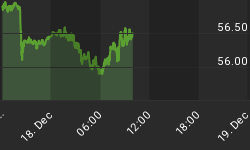In a commentary sent last week to paying subscribers, I wrote about price failures in the equities markets and in the Dollar Index. When we expect the markets to do one thing and they don't cooperate, then we should expect an accelerated move in the opposite direction. This is what defines a price failure.
For the equity markets, I discussed a price failure in the context of the current bearishness amongst investors. Essentially, breaks below support levels while investor sentiment was bearish are what defined a price failure in equities. Such price failures often led to accelerated and prolonged price moves lower. To see why I suggested to our current subscribers why I would reduce market exposure, please see the article I posted on Safe Haven entitled, "Price Failure" (http://www.safehaven.com/showarticle.cfm?id=9655). Here I present the data and rationale as to why I think risk is rising despite the increasing bearishness amongst investors.
Another price failure is also taking place in the Dollar Index. See figure 1 a weekly chart of the Dollar Index. The maroon highlighted price bars represent positive divergences between price and an oscillator used to measure momentum in prices. Positive divergences tend to show up at market bottoms and prior to a change in trend. In other words, they show up in a down trend, and are frequently a precursor to trend reversal. If prices close below the lows of these divergence bars, this can lead to accelerated selling as traders, speculating on a change in trend, close losing positions. The change in trend has not materialized and the down trend continues.
Figure 1. Dollar Index/ weekly
A simple study that sells the Dollar Index short on any close below a prior positive divergence bar tends to bear this out. I would not consider becoming bullish on the Dollar Index until there is either a close above the current positive divergence bar ($77.18) or another positive divergence shows up at lower levels.
Since 1986, there have been 24 instances of a break below a prior positive divergence bar. 17 were profitable with the average winner 2.6 times the average loser. The equity curve for such a strategy is shown in figure 2.
Figure 2. Equity Curve
So what can we infer from such a study of price failure in the Dollar Index? The continued down trend in the Dollar Index was likely to continue and possibly at an accelerated pace (which it has). This suggested to me and to our readers that overweighting commodities was the correct play.
The price failures in equities and in the Dollar Index suggest the following:
-
Fed rate cuts will have little impact on rescuing the economy from the unwinding of the credit and housing bubbles.
-
The continued Fed rate cuts will more likely stoke inflationary pressures as opposed to stimulating the economy.
-
The current trend in the Dollar Index and the price failure in the major stock indices suggest we should continue to favor hard assets over paper assets.
To learn more about our quantitative and disciplined investment approach please visit www.thetechnicaltake.com and sign up for our free weekly newsletter and downloads.
Guy M. Lerner may be reached at guy@thetechnicaltake.com.















